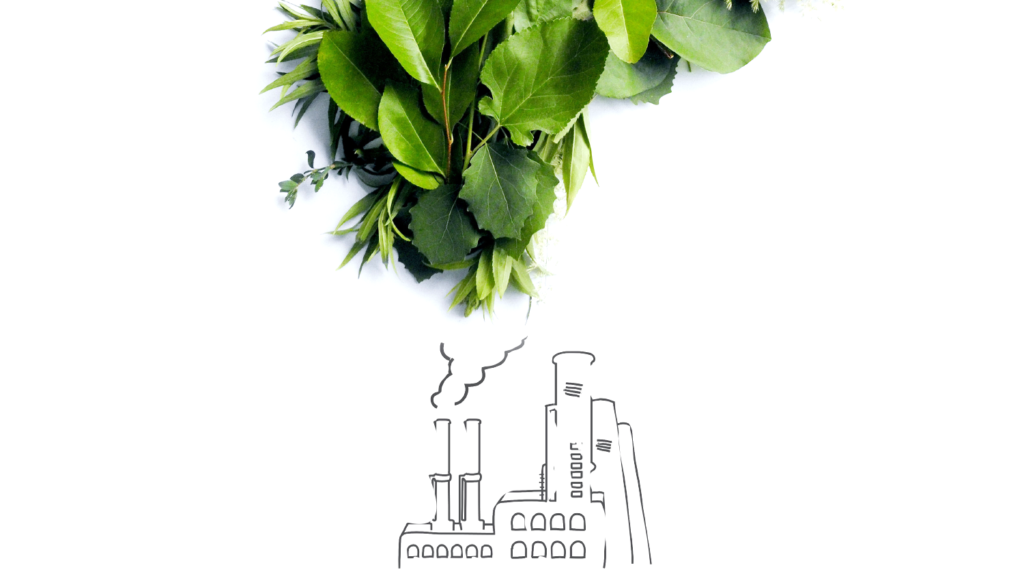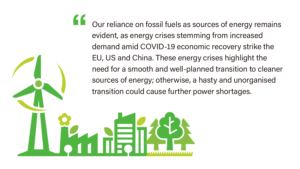
Examining the WTO’s role in the sustainable development of the energy sector
The energy sector is responsible for much of the world’s greenhouse gas emissions. This makes it a key player in the fight against climate change, and calls for a transformation of how the sector operates. The transition to cleaner energy also involves trade, through the exchange of commodities and technologies vital to realising this transformation. International, domestic and individual efforts are all necessary to make the long-term transition happen. Yet most climate change pledges to date fall short of what is needed to meet the Paris Agreement goals on lowering emissions. Is it too late for the energy industry to turn over a new leaf? In this article, Catalina Fernandez Silva, working group coordinator at the European Union Chamber of Commerce in China, outlines the requirements involved in a transition to clean energy and the role of the World Trade Organization (WTO) in the process.
Easier said than done: the path to clean energy
The United Nations (UN) High-level Dialogue on Energy’s 2021 report on energy transition calls attention to the urgency of energy reform and international cooperation. It also pinpoints the energy industry as responsible for an alarming 65 per cent of total worldwide greenhouse gas emissions. Today’s global renewable capacity is less than half of the estimated 8,000 gigawatts (GW) needed to enable the UN’s 2030 Agenda for Sustainable Development. The report also pointed out that accomplishing the target would boost global gross domestic product (GDP) by an average of 1.3 per cent per year between 2020 and 2030.[1]

Drastic change needs to happen and fast – this is evident from just a few of the milestones the UN outlined as essential to ensure a clear path for a decarbonised 2050, where 92 per cent of energy should come from renewable sources; by 2025, 100 countries should have targets for 100 per cent clean power; all major oil and gas companies need verified net-zero commitments; and there should be no new coal plants in the pipeline.[2] With imminent deadlines just a few years away, governments, communities, international and regional institutions need to act before it is too late.
A clean energy transition consists of shifting away from CO2 emitting fossil fuels—oil, natural gas and coal—as consumption and production energy sources to renewable energy sources such as solar, wind, nuclear and hydroelectricity. Although progress in shifting to renewable sources of energy is vital, innovation and solutions for mass energy storage is just as necessary to be able to ensure long-term stability. In parallel, the aim of this difficult transformation is to improve clean energy access, efficiency, and infrastructure, along with exploring the potential of carbon capture storage and/or utilisation.
Countries around the globe are already committing to tangible steps towards clean energy; Chile, Germany, Narau, the United Arab Emirates and the United States, among others, recently pledged clear intended actions ranging from investments in technology to supporting access to ‘clean cooking’, and scaling up any successful methods of transitioning to renewable energy.[3]
The transformation of the energy sector largely hinges on the innovation, development and availability of clean energy technology (CET). CETs include solar panels that generate electricity by converting sunlight into energy; turbines that produce electricity from the power of the wind or the force of flowing water; electricity grids that can transport power over long distances; energy storage infrastructure; and other mechanisms that allow for the use of natural clean sources of energy. CETs are the best tool in the box when working to meet supply and demand for cleaner energy worldwide for all.
WTO’s footprint in clean energy transition
The WTO promotes transparent and fair trade, open markets and sustainable economic growth across its 164 members, which represent 98 per cent of world trade.[4] In the fight against climate change, bridging trade and environmental policies is critical to simultaneously making the production and consumption of energy greener and more sustainable.[5]
While the access to, and innovation and expansion of, CETs is of utmost importance to a successful clean energy transformation, it goes hand-in-hand with open markets, increased investment, supply chains, and supportive domestic/international trade policies and frameworks. Moreover, the push for the proliferation of these technologies and the removal of trade barriers inevitably relies on WTO mechanisms to ensure accountability. In the long list of trade barriers, a key obstacle is tariffs on environmental goods (EG), including CETs, which raise the cost of the products and decreases their competitive advantage.[6]
In 2016, the WTO Environmental Goods Agreement (EGA)—an attempt to liberalise and boost trade of EGs—collapsed after many years of negotiations. The main points of contention centred around the list of goods to be included, the scope of tariff reductions, a lack of participation by developing countries, and political implications.[7] Country leaders chose to listen to their domestic industries—which feared increased competition—and did not act in the interest of the worldwide battle against climate change. Creating a new similar agreement would prove valuable to the WTO, sustainable development and the clean energy transition, though reviving negotiations on the EGA is unlikely due to the political interests at play.

What lies ahead?
Our reliance on fossil fuels as sources of energy remains evident, as energy crises stemming from increased demand amid COVID-19 economic recovery struck the EU, the US and China. These energy crises highlight the need for a smooth and well-planned transition to cleaner sources of energy. The future must incorporate diversified sources of energy targeting not only the consumer but also mass storage solutions – making our energy system a more complex, reliable and efficient one.
Cleaning up the energy sector may seem like an uphill battle. The most efficient and effective way to combat climate change may be in smaller scale regional initiatives in energy transition—such as the new US-China Joint Glasgow Declaration on Enhancing Climate Action in the 2020s. This partnership by two of the world’s largest CO2 emitters includes efforts within their respective countries, bilaterally and globally; main objectives include a clean energy transition, enacting policies surrounding the development of technologies and increased cooperation.[8] The WTO must incentivise more bilateral and regional initiatives, and ensure that they are executed. The EU, the US and China must continue to create policies and positive change aimed at combatting climate change. Healthy soft-power competition between these superpowers on innovation and reaching their respective climate and clean-energy goals, coupled with continued cooperation, is what will truly drive this worldwide transition to renewable energy.
This
brief overview of the clean energy transition and the role of trade in the
transformation barely scratches the surface of the factors and stakeholders at
play. Although uncertainty still looms ahead, one thing is clear; it is not too
late to turn over a new leaf if actions are taken immediately.
[1] Theme Report on Energy Transition: Towards Achievement of SDG 7 and Net-Zero Emissions, United Nations, 2021, p. 9.
[2] Theme Report on Energy Transition: Towards Achievement of SDG 7 and Net-Zero Emissions, United Nations, 2021, p. 6.
[3] New commitments at UN energy summit a major stride towards affordable and clean energy, but much work ahead to halve energy access gap by 2025, United Nations Development Programme, viewed 30th October 2021 <https://www.undp.org/press-releases/new-commitments-un-energy-summit-major-stride-towards-affordable-and-clean-energy>
[4] World Trade Organization website, viewed 20th October 2021, <https://www.wto.org/english/thewto_e/whatis_e/who_we_are_e.htm>
[5] Mainstreaming trade to attain the Sustainable Development Goals, World Trade Organization, 2018, viewed 20th October 2021, p. 47 <https://www.wto.org/english/res_e/publications_e/sdg_e.htm>
[6] Clean Energy Technologies and the Trade System: Proposals and Analysis. E15Initiative. Geneva: International Centre for Trade and Sustainable Development and World Economic Forum, 2013, p. 22.
[7] Environmental Goods Agreement: A New Frontier or an Old Stalemate?, CSIS, viewed 5th November 2021 <https://www.csis.org/analysis/environmental-goods-agreement-new-frontier-or-old-stalemate>
[8] US Department of State, <https://www.state.gov/u-s-china-joint-glasgow-declaration-on-enhancing-climate-action-in-the-2020s/>


Recent Comments